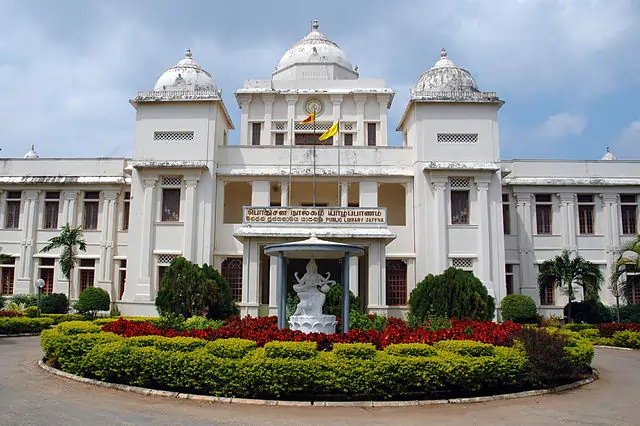Colonial buildings in Jaffna
Home
›
Adventure & Activities
›
City Tours / Colonial Buildings
›
Colonial Buildings
›
Colonial buildings in Jaffna
Nowadays Jaffna’s colonial past is still visible in the colonial architecture. The Portuguese established the city as their colonial administrative centre in 1621, the Dutch VOC took it over in 1658. Among others, the Dutch Fort has remained over the centuries, while many colonial era buildings were destroyed or damaged during the country’s Civil War, which ended in 2009. However, you can still see some ancient Dutch-style houses and civil buildings. When the British occupied the country, there also was an expansion in trade and development in the Jaffna area that led to the construction of roads and the railway system.
Previous
Next
Jaffna Fort
The Fort in Jaffna is surrounded by the sea waters. Originally built by the Portuguese and renovated by the Dutch, this Fort used to house a statue of the virgin Mary. Nowadays you can still see the former Governor’s residence, the Queen’s House, the Garrison Parade Ground, Police quarters and several buildings from the Portuguese inside the walls.
The Jaffna Public Library
The Jaffna Public Library was originally built in 1933 and burnt in 1981. It was one of the biggest libraries in Asia, containing over 97,000 books and palm leaf manuscripts. Over a million books burned in the 1981 arson attack. Some ancient Sinhala and Tamil books were never recovered. In 2001, rehabilitation of the library was completed, with new structures being built and new books received, although the old books and manuscripts were not replaced. It is Sri Lanka’s second main public library.
The building’s classical lines and beautiful proportions make it stand out architecturally and it is surrounded by beautiful gardens.

Previous
Next
The Old Kachcheri Building
The Jaffna Kachcheri building is an important example of the colonial architecture of Sri Lanka. Remaining architectural elements such as massive thick walls, roman arches, inner courtyards, and shaped windows and doors show the 19th century British architectural standard. The old Kachcheri building is in the area known as the Old Park and is an archaeological protected monument. The word Kachcheri is used to denote the principal government department that administrated a district in Ceylon. The old Kachcheri at Jaffna is said to be established by the British. Enjoy the serenity of the Old Park in Jaffna, with its manicured lawns, trees, benches, and interesting colonial legacy.
Batticaloa Lighthouse
Lying on an island off the eastern coast, Batticaloa or Batti, is linked to the mainland by causeway, bridge, and ferry and by road and railway connections. Batticaloa is the trading centre for rice and coconuts from nearby plantations and for other agricultural products. It was captured by the Portuguese in 1622, by the Dutch in 1638, and by the British in 1796. The region has been a centre of Tamil separatist activity, and during the 1980s the town was held by Tamil rebels until it was retaken in 1991 by government troops. The Tsunami of December 2004 also struck Batticaloa, causing widespread death and destruction. Portuguese and Dutch forts remain from the colonial period. In Batticaloa you can find a large weaving and handloom factory, as well as a lively market, the Bazaar. Other than that, Batticaloa is worth visiting for it’s colonial landmarks like the Fort and the Batticaloa Lighthouse.

COLONIAL
BUILDINGS
The architecture of Sri Lanka is influenced by colonisation by the Portuguese, the Dutch, and the English. The colonial architecture of ancient Sri Lanka, formerly known as Ceylon, forms a major part of Sri Lanka’s tourist attractions. Many of the colonial buildings from different eras can be found in cities like Colombo, Galle, Kandy, Negombo, Jaffna and Trincomalee and there are remains of Portuguese, Dutch, and English Forts all around Sri Lanka.

